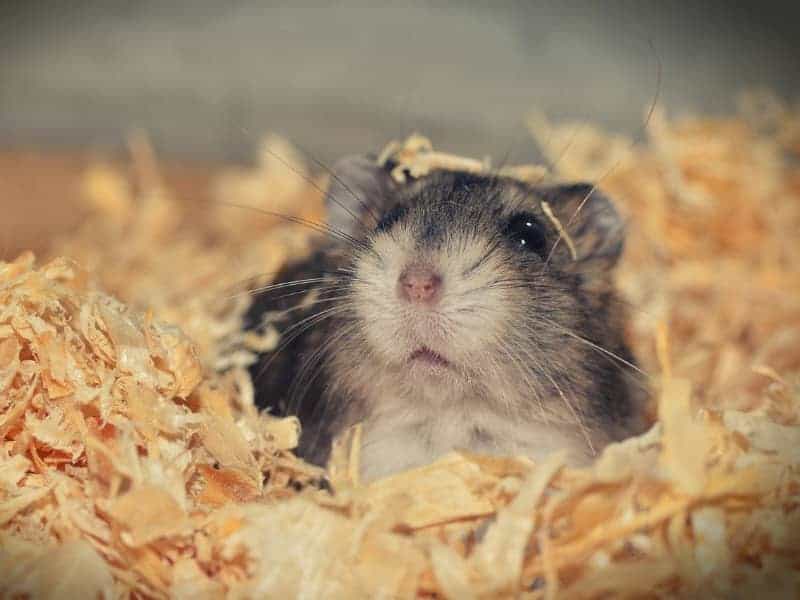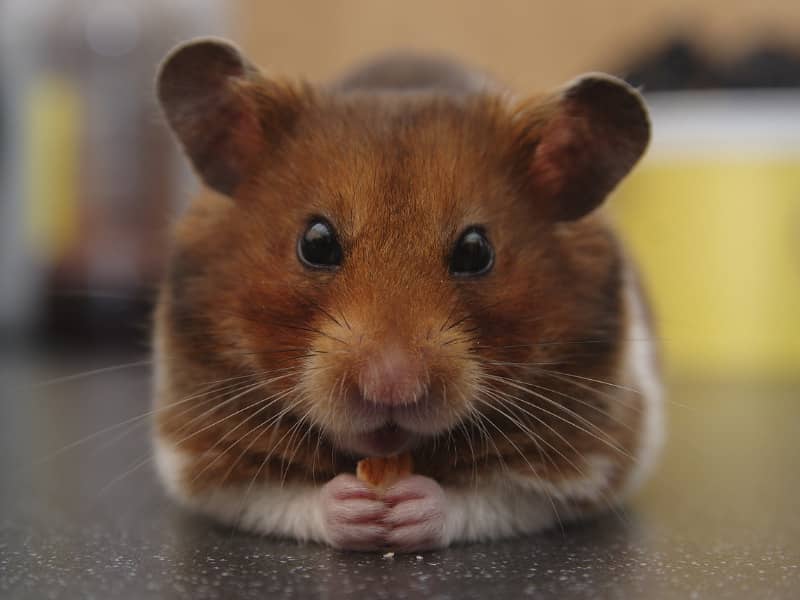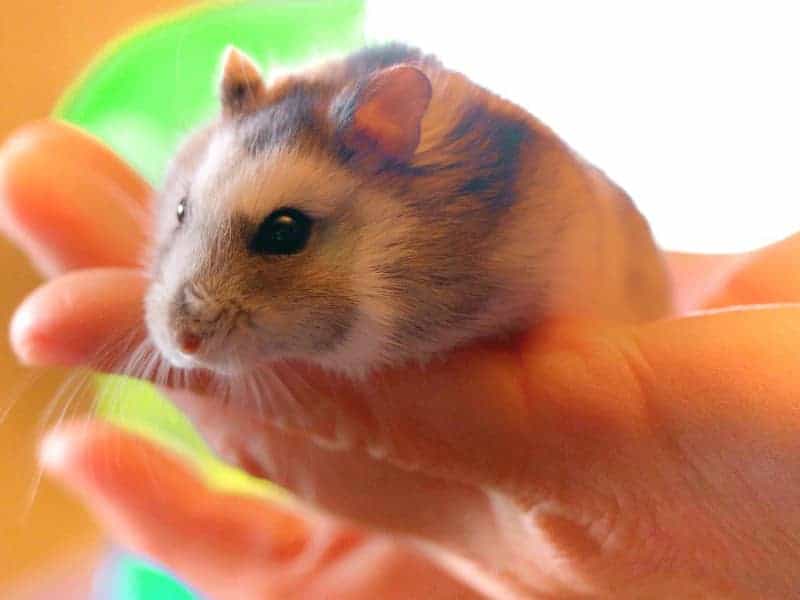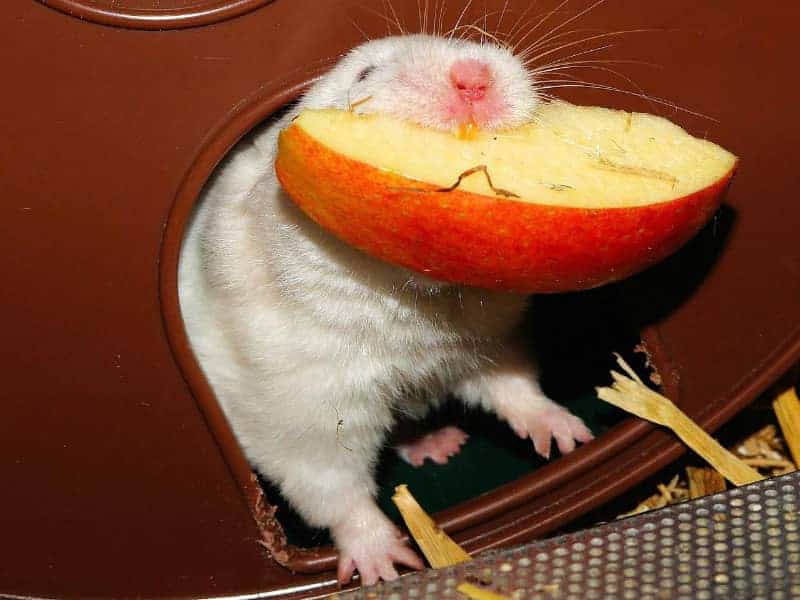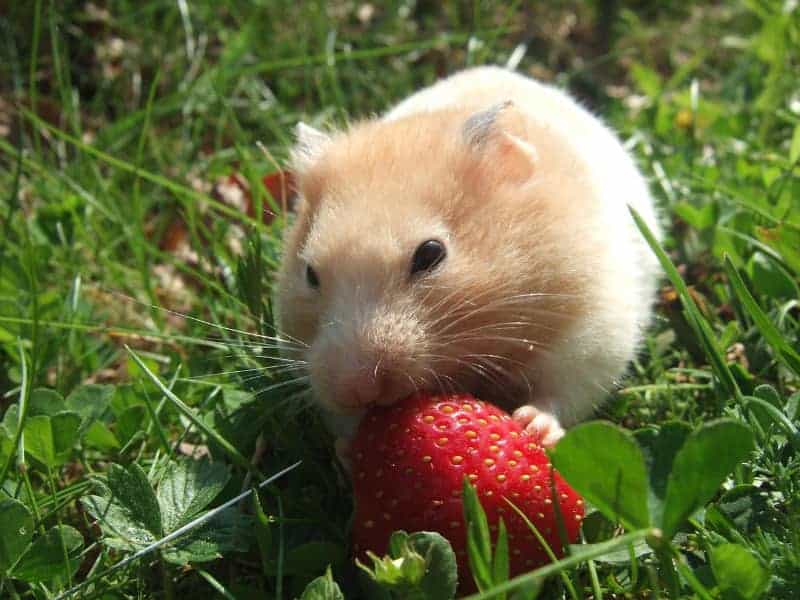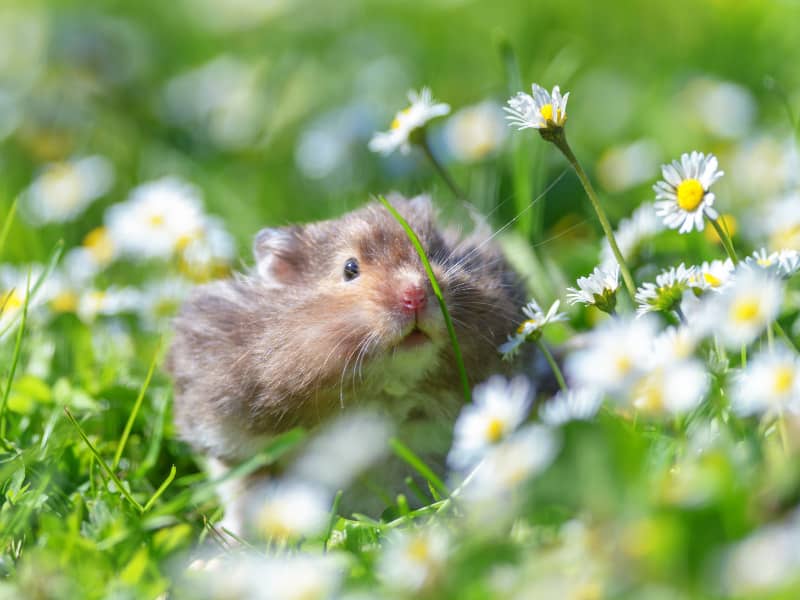
Hamster free run
Free running is not just a nice extra for your hamster, but an essential component for his well-being. In this section you will learn why free running is so important and what benefits it has for the health and behavior of your little friend.
- Hamster free run
- Hamster free run - health benefits
- Preparation of the hamster free run area
- How to accustom the hamster to the free run
- Hamster Free Run - Common Mistakes and How to Avoid Them
- Hamster free run - Conclusion
- FAQ on the subject of "hamster free run
- How long should the free run last for my hamster?
- Can I have more than one hamster in the free run at the same time?
- What do I do if my hamster escapes during the free run?
- My hamster is showing signs of stress during free running. What should I do?
- Can I do the free run outdoors?
- What utensils are necessary for free running?
- Is it safe to let my hamster run without supervision?
- How do I get my hamster used to free running?
- My hamster nibbles on furniture and cables. What can I do?
- Can I combine the free run with other pets?
- How often should the free run take place?
Hamster free run - health benefits
Hamsters are naturally very active animals that travel long distances in the wild. A lack of exercise can therefore lead to health problems such as obesity or digestive disorders. Free-range exercise allows your hamster to move extensively and strengthen its muscles. This is especially important because hamsters that are only kept in a cage often do not get enough exercise.
Another health benefit is the stimulation of the circulatory system. Exercise promotes blood circulation, which in turn strengthens the cardiovascular system. Mental health also benefits from free running. The opportunity to explore the environment keeps the hamster mentally fit and can even help prevent signs of aging such as dementia.
Psychological aspects
Hamsters are curious animals that love to explore their environment. A free run allows them to experience new stimuli and challenges, which enhances their cognitive development. Interacting with different objects and solving small "problems", such as finding a way through a maze, sharpens their problem-solving skills.
Likewise, free running can help reduce stress and boredom. Hamsters that regularly have the opportunity to explore their environment outside the cage often exhibit more balanced and less aggressive behavior. This is especially important since boredom and stress can lead to behavioral problems such as "cage gnawing," in which the hamster gnaws on the bars of its cage out of frustration.
Social interaction
Although hamsters are considered solitary animals, they benefit from social interactions, especially with their human. Free running provides an excellent opportunity for you to spend time with your hamster and strengthen your relationship. By playing and interacting together, the hamster learns to trust you, which deepens the bond between you.
In addition, free running provides an opportunity for the hamster to be introduced to other pets on "neutral ground," provided they are animals that do not pose a threat to him. However, this interaction should always take place under supervision to ensure that neither party is stressed or frightened.
Preparation of the hamster free run area
Before your hamster can enjoy freedom, careful preparation of the free-range area is essential. In this section we will go over how to choose the space, what safety measures to take and what utensils you will need.
Room selection
Choosing the right room for your hamster's free run is crucial. Ideally, the room should be spacious, well ventilated and free of hazards. A living room or a dedicated room are often good options. Avoid places with lots of electrical cords, sharp objects or poisonous plants.
Make sure the room is at a comfortable temperature for the hamster. Rooms that are too cold or too warm can be stressful for the animal. Also, the room should be easily secured to prevent the hamster from escaping. Doors and windows should be closed and secured, and it is advisable to clean the floor in advance.
Security measures
Safety should always come first when it comes to letting your hamster run free. One of the most important safety measures is to protect electrical outlets and cables, as hamsters like to nibble on everything. Use special protective caps or cable ducts for this purpose.
Removing or securing objects that could fall over and injure the hamster is also important. Make sure no toxic substances such as cleaners or pesticides are within reach. Some hamsters are very adept at gaining access to places that seem safe at first glance.
Necessary utensils
Free running requires some paraphernalia to make the experience as pleasant as possible for your hamster. This includes a water bowl, some hiding places, and possibly a running wheel for extra exercise. Toys such as small balls or tubes can also be a good addition to keep the hamster busy.
| Utensil | Meaning |
| Water bowl | To ensure that the hamster has access to fresh water at all times. |
| Hide | Provide safe places for the hamster to retreat and rest. |
| Impeller | For extra exercise and employment, especially if the free-range area is small. |
| Toys | Small balls, tubes, etc. keep the hamster active and promote its cognitive development. |
| Cable protection | For securing electrical cables, as hamsters like to nibble on cables. |
| First aid kit | In case the hamster gets injured; should contain disinfectant and bandages. |
This chart can serve as your checklist to make sure you have made all the necessary preparations for your hamster's free run.
How to accustom the hamster to the free run
The transition from cage to free-range can be an exciting, but also frightening experience for your hamster. In this section you will learn how to make the transition as comfortable as possible for your hamster.
Step by step guide
The key to successful acclimation is patience and a gradual approach. Start by leaving your hamster in the free-range area for a short time, about 5 to 10 minutes. Observe his behavior closely to make sure he is comfortable.
Gradually increase the duration of the free run as you continue to observe your hamster's behavior. If he seems relaxed and curious, it is a good sign that he is ready to spend more time outside the cage. Make sure you are always nearby during this phase so you can intervene in case of emergency.
Signs of anxiety or discomfort
It is important to understand your hamster's body language to determine whether or not he is comfortable in the free-range area. Trembling, tucked ears or a bushy tail are signs that your hamster is stressed or anxious. In such cases, it is best to discontinue the free run and return the hamster to its cage.
Give your hamster time to recover and try again later, perhaps with a shorter duration or in a smaller area. It may also be helpful to furnish the free-range area with familiar items from the cage to give your hamster a sense of security.
Positive reinforcement
Positive reinforcement is an effective way to get your hamster to enjoy free running. Reward him with treats or petting when he is brave and explores his new environment. This will help him develop positive associations with the free-range area.
Avoid forcing or pushing your hamster, as this will only lead to stress and anxiety. Instead, allow him the freedom to explore the area at his own pace while providing positive reinforcement to build his confidence.
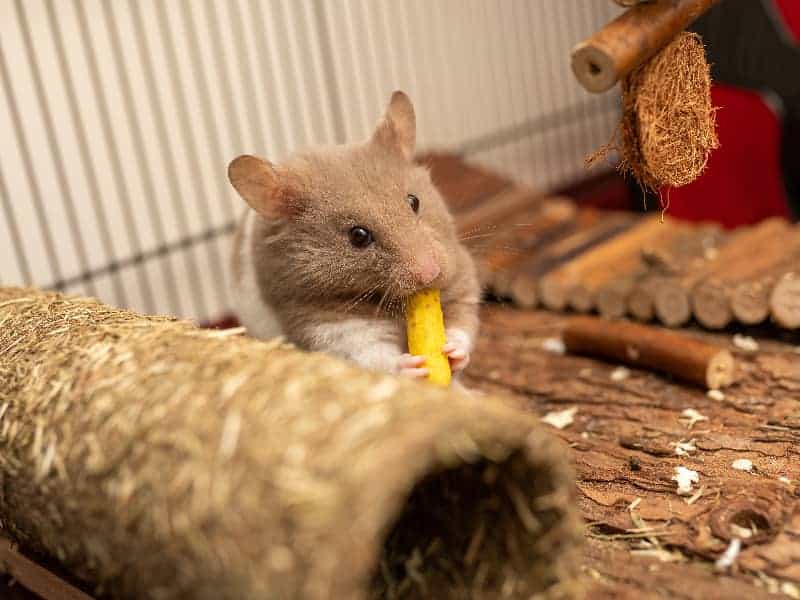
Hamster Free Run - Common Mistakes and How to Avoid Them
Even though free running has many benefits for your hamster, there are some common mistakes that can tarnish the experience. In this section, you'll learn how to avoid these mistakes to ensure a safe and enjoyable free run.
Unsuitable rooms
Choosing the wrong room for free-range can lead to a number of problems. Rooms with lots of places to hide, such as sofas or closets, can make it difficult to recapture the hamster. In addition, rooms with lots of electrical cords or poisonous plants can be dangerous.
Be sure to choose a room that is safe, well ventilated and easy to monitor. Also avoid rooms that may be too stressful for the hamster, such as rooms with loud noises or high numbers of visitors.
Lack of supervision
Another common mistake is the lack of supervision during free running. Hamsters are curious and often fearless animals that can quickly get themselves into trouble. Whether it's nibbling on cables or squeezing into small crevices, the dangers are many.
It is therefore essential that you supervise your hamster during the entire free run. If this is not possible, you should postpone the free run to a later time when you can devote the necessary time and attention.
False expectations
Sometimes hamster owners have unrealistic expectations about free running. It is important to understand that not every hamster will enjoy freedom right away. Some need more time to acclimate, and some never really feel comfortable outside their cage.
Don't pressure your hamster or expect him to adjust to the new area right away. Give him the time and space he needs, and be prepared to adjust your plans if he shows signs of stress or discomfort.
Hamster free run - Conclusion
Free running is an important and enriching experience for your hamster, promoting both its physical and mental health. By preparing carefully and following a few basic rules, you can ensure that this time is enjoyable and safe for both parties.
From choosing the right room and the necessary safety measures to gradually acclimating your hamster, there are many aspects that need to be considered. Time management, interactive games and rest periods also play an important role for a successful free-range period.
Remember to always keep an eye on your hamster and closely monitor his needs and behaviors. Each hamster is an individual and what works for one does not necessarily apply to another.
With patience, attention and love, free running will become a valuable addition to your hamster's life and strengthen the bond between the two of you.
FAQ on the subject of "hamster free run
How long should the free run last for my hamster?
The duration of the free run can vary depending on how well your hamster is used to it. For beginners, 5 to 10 minutes is a good start. This time can be gradually increased as long as the hamster is comfortable.
Can I have more than one hamster in the free run at the same time?
It depends on the hamsters. Some hamsters are territorial and might react aggressively to other hamsters. If you have multiple hamsters, it is best to let them run individually or keep them under constant supervision.
What do I do if my hamster escapes during the free run?
Keep quiet and close all doors and windows in the room. Check all possible hiding places and put out treats to attract the hamster. An escaped hamster will often return on its own if it is hungry or thirsty.
My hamster is showing signs of stress during free running. What should I do?
If your hamster shows signs of stress, it is best to stop the free run and put him back in his cage. Give him time to recover and try again later, perhaps with a shorter duration or in a smaller area.
Can I do the free run outdoors?
It is generally not recommended to let hamsters run outdoors because the risks of escape, predation and disease are too great. If you still want to try it, make sure the area is securely fenced and you supervise your hamster at all times.
What utensils are necessary for free running?
Some basic utensils such as a water bowl, hiding places and possibly a running wheel are important for free running. These items provide comfort and security for the hamster during its time outside the cage.
Is it safe to let my hamster run without supervision?
It is not recommended to leave your hamster unattended during free running. Hamsters are curious animals that can quickly find themselves in dangerous situations.
How do I get my hamster used to free running?
The acclimation process should be gradual. Start with short periods of 5 to 10 minutes and gradually increase the duration while observing your hamster's behavior.
My hamster nibbles on furniture and cables. What can I do?
Make sure the free-range area is free of cords and other potentially dangerous objects. You can also provide special chew toys to minimize nibbling on unwanted objects.
Can I combine the free run with other pets?
It depends on the animals involved. Hamsters are prey animals and may be considered as such by other pets such as cats or dogs. If you have other pets, it is best to free range separately or under close supervision.
How often should the free run take place?
This depends on your hamster and his need for exercise and stimulation. Some hamsters enjoy daily free running times, while others may only need free running a few times a week.
Author

-
Garden animal - A life with nature
Welcome to my animal blog! My name is Dirk and I am happy to take you on my journey through the fascinating world of animals and gardening.
Born 54 years ago, I have had an insatiable curiosity for the animal world around me since childhood. Although I have moved professionally in other industries, my true passion has always been animals and nature. It is remarkable how a small garden has become such an important part of my life.
Many of my fondest memories are associated with the animals that share our home. Whether it's the curious squirrels that scurry across the trees in the morning, the colorful variety of birds that visit our feeders, or the busy bees and butterflies that pollinate our flowers, every moment with them is invaluable to me.
This blog is my contribution to share my experiences, discoveries and insights with like-minded people. Here I will share stories of unforgettable encounters with animals, give tips on gardening and creating wildlife-friendly habitats, and take you on my journeys through nature.
Thank you so much for being here!
Cordial,
Dirk aka garden animal
Last posts
- 27. February 2024PetsVeganes Hundefutter – Grün und Gesund?
- 18. January 2024ChickensOregano für Hühner
- November 27, 2023HamsterDiurnal hamsters
- November 24, 2023HamsterHamster hammock

